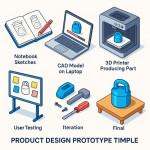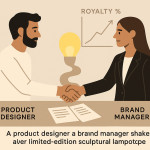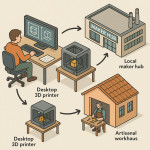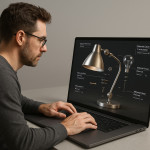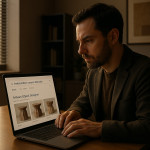Photorealistic mock-ups: present object concepts remotely and secure commissions
Need to win clients without a single in-person meeting? Photorealistic mock-ups let you showcase materials, form and context with eye-level realism. This guide walks you through the complete remote workflow—from first sketch to clickable quotation—so you can secure commissions faster and scale your object-design business.
Why photorealistic mock-ups convert prospects into paying clients
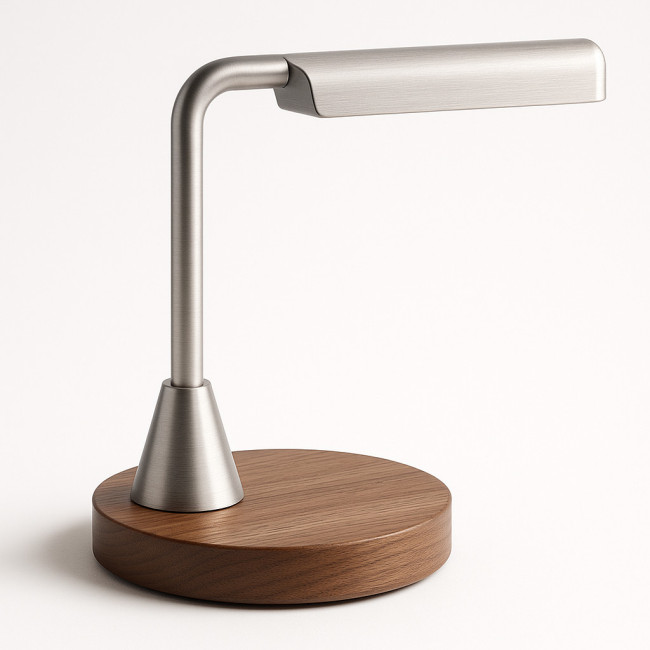
Traditional sketches give only a vague idea of scale and finish. By contrast, photorealistic mock-ups reproduce lighting, textures and reflections so accurately that decision-makers feel they can “touch” the object. According to a CGSociety client survey, 74 % of buyers approve a concept after viewing a high-fidelity render versus 41 % after seeing flat drawings.
- Emotional impact: true-to-life lighting triggers an instant “I want this” reaction.
- Risk reduction: stakeholders spot flaws early, lowering costly revisions.
- Global reach: send a link instead of shipping fragile prototypes overseas.
When shared through a premium craft designer directory such as Artfolio's curated listings for product creators, a well-lit photorealistic mock-up can shortcut the usual round of sample requests.
Mapping a remote-first mock-up workflow
1. Collect precise inputs
Gather dimensions, target materials, colour references and usage context. A concise brief avoids the ping-pong that delays renders. Use the prototype-timeline benchmarks checklist to align expectations early.
2. Model the object in 3D
Rhino, Fusion 360 or Blender all export to formats suited for high-end render engines. Keep topology clean; every oddly placed vertex will show up once you add physically based materials.
3. Apply physically accurate materials
PBR libraries paired with measured BRDF data reproduce metal roughness, translucent resins or matte ceramics effortlessly. This step is crucial when you pitch to eco-conscious clients who need proof that your sourcing matches their values. Dive deeper into responsible sourcing via sustainable material plans.
4. Light the scene
An HDRI map sets the base ambience; key and fill lights accentuate form. Keep colour temperature close to the final display environment—warm retail lighting differs from a daylight museum atrium. Need help with shot framing? The hero-shot lighting guide offers step-by-step angles.
5. Produce multiple camera angles
Show front, 45°, top and detail crops. Buyers often forward renders to non-designers; clarity wins the vote.
6. Deliver interactive assets
Combine stills with a WebGL viewer so prospects can spin, zoom and annotate. Platforms like Marmoset Viewer or Sketchfab embed inside email or directory listings.
Essential software & hardware stack
| Task | Recommended Tool | Why it excels for photorealistic mock-ups |
|---|---|---|
| 3D Modelling | Fusion 360 | Parametric history simplifies last-minute dimensional edits. |
| Texturing | Substance 3D Painter | Smart material presets shave hours off PBR pipeline. |
| Rendering | V-Ray 6 | CPU & GPU hybrid engine speeds near-real-time previews. |
| Interactive Viewer | Sketchfab Pro | Easy annotations and password-protected client rooms. |
| Collaboration | Frame .io | Time-coded comments integrate directly with render passes. |
Five persuasion tactics that turn photorealistic mock-ups into signed contracts
- Embed cost overlays: add a transparent callout showing material price brackets directly on the render.
- Show before/after iterations: clients appreciate the evolution from sketch to photorealistic mock-up.
- Quantify sustainability: pair the image with CO₂-savings data compared to traditional prototyping.
- Add social proof: include mini case studies from past projects that used the same workflow and won bids—see how small-batch production pathways leverage renders to secure volume orders.
- Offer next-step clarity: end every presentation with a clickable quotation button and delivery timeline.
Accuracy matters: material validation for eco-minded buyers
Today's brands scrutinise ESG claims. Photorealistic mock-ups that misrepresent grain or translucency can damage trust. Always
- use spectrophotometer readings for true colour values,
- simulate surface roughness within ±5 % of physical samples,
- provide a side-by-side photograph of the actual swatch.
If you already manage digital twins of your catalogue, sync textures to guarantee parity.
Performance metrics you should track
Without data, even stunning photorealistic mock-ups remain guesswork. Measure these KPIs every quarter:
- View-to-brief rate: percentage of directory visitors who request a proposal after viewing the mock-up.
- Revision count: average rounds before approval—aim for under two.
- Prototype shipping saved: units not physically produced thanks to renders.
- Carbon reduction: kg CO₂e avoided by skipping courier transport.
Quick self-test: are your photorealistic mock-ups client-ready?
FAQ
- Do I still need physical prototypes if I use photorealistic mock-ups?
- You'll eventually build one for engineering validation, but most clients now sign off design intent based solely on high-fidelity renders.
- How long does a typical photorealistic mock-up take?
- For a single object with three material variants, expect two to four days including feedback rounds.
- Which file formats should I send to clients?
- JPEG or PNG for quick previews, layered EXR or PSD for agencies that need post-production control, and glTF for interactive viewers.
- Can photorealistic mock-ups integrate into AR apps?
- Yes. Export USDZ or glTF, compress textures to 4 MB and test on iOS/Android before release.
- What hardware spec renders a 4K frame in under 10 minutes?
- A GPU with at least 10 000 CUDA cores (e.g., RTX 4080) paired with 64 GB RAM handles most PBR scenes swiftly.
Take action today
Photorealistic mock-ups aren't just pretty pictures; they are deal-closing assets. Streamline your pipeline, track the KPIs above and watch your approval rate soar. Ready to pitch your next concept? Package your new renders and hit “send”—your future clients are one click away.

